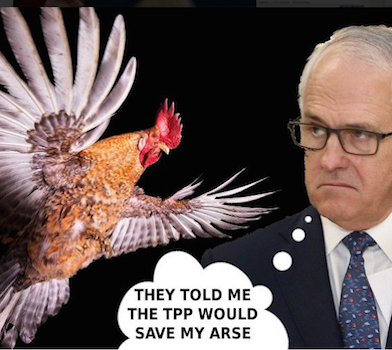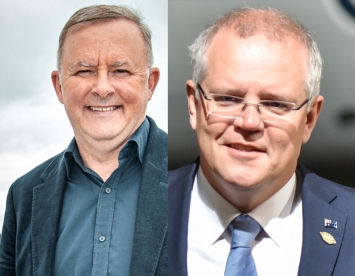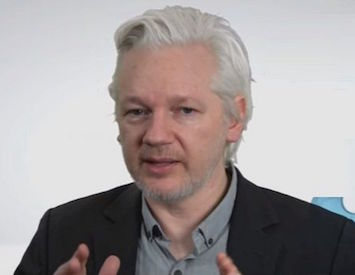The controversial TPP was a lose-lose idea from the start for Australia, so now that Trump has consigned it to the dustbin, why does PM Turnbull continue the farce, asks James O'Neill.
THE TRANS-PACIFIC PARTNERSHIP (TPP) has been seven years in the making with final agreement among its seven participant nations only being finalised in late 2016. To date, only Japan and New Zealand have ratified it and they look like being the only ones to do so.
The negotiations were shrouded in secrecy and, even after the details became public, the mainstream media made very little effort to shed light on its contents. There are a number of reasons why this has been the case.
First, to describe it as a trade agreement is and always has been a misnomer. Only seven of its 29 chapters actually dealt with trade.
Secondly, the agreement provides for the resolution of disputes between parties – whether countries, companies or individuals – that are the antithesis of long established procedures under which legal disputes are resolved. That is, by an open court process that is transparent throughout and with the parties having a right of appeal (or appeals) against an adverse decision.
Bernie Sanders explains how the TPP allows multinational corporations to sue local, state and federal governments around the world.
Instead, the TPP provided for a system that was non-judicial, with no right of appeal and with the power to override the laws of sovereign nations. It represented an unprecedented attack on a nation’s sovereignty.
Thirdly – and as a corollary – it invested enormous power in corporations against the ordinary citizen who had little or no redress. As such, it was a continuation of trends that have accelerated over the past 30 years of the concentration of power and wealth in the hands of an ever-diminishing number of individuals and corporations.
Fourthly, although wrongly promoted as a trade deal, the objectives of the TPP were at heart part of a fundamental geopolitical policy initiated and promoted by former U.S. President Obama. That policy had as its core objective the maintenance of U.S. corporate and military power in the Asia-Pacific region. There was an equivalent strategy in Europe with the Trans-Atlantic Trade and Investment Partnership (TTIP).
Turnbull Govt 'working flat out' to revise TPP deal without Trump's support https://t.co/oeCPWh2zjb #auspol pic.twitter.com/GC2qN9Ehof
— CitizenSmith (@sbcbooks) January 23, 2017
The two agreements, TPP and TTIP, excluded China and Russia respectively. This was not a coincidence. Those two nations are at the heart of an alternative economic framework that represents the greatest shift in economic and geopolitical power in the past 100 years. A discussion of that process is outside the scope of the present article.
The level of public opposition to the agreement grew as people became more aware of its contents and implications. The most vocal opposition has come from President Trump. During the recent election campaign he was a forthright critic.
In his 'Declaring American Economic Independence' speech back in June, in which he pledged to withdraw the U.S. from the TPP, Trump said:
“The TPP will undermine our economy and it will undermine our independence.”
Trump Administration Announces U.S. Withdrawal From Trans-Pacific Partnershiphttps://t.co/ILSMtcsskS#alternativefacts #TPP #MAGA
— MagaFeed (@MagaFeed) January 22, 2017
Given the antecedents and objectives of the TPP (and TTIP) this was, to say the least, surprising.
Since being sworn in on 20 January, the White House has reiterated the President’s intention to withdraw the United States from both the TPP and the TTIP.
It was probably in recognition of this political reality that led Labor leader Bill Shorten to pronounce that the TPP deal was “dead in the water”.
Shorten was promptly denounced by Prime Minister Turnbull who accused Shorten of “shallow populism”.
Turnbull went on, saying that the TPP was
“... a very important element in continuing to build those open markets of trade in our regions."
Seriously @TurnbullMalcolm?? You're better than this. How is it Labor's fault that #Trump cancelled your dodgy #TPP?? #auspol
— John Wren (@JohnWren1950) January 23, 2017
Apart from cheap political point scoring, it is difficult to discern a rational basis for Turnbull to maintain a positive stance toward the TPP in the face of mounting evidence that is doomed.
A possible answer to that question lies in Turnbull’s further comment he made in the same interview:
“Historically, American Presidents have campaigned against trade deals – President Obama did, President Clinton did – but in office have generally supported them.”
In short, Turnbull expected Trump to behave as he had done himself: present one image to the electorate and then turn 180 degrees once in office.
Fortunately for Australia, and unfortunately for Turnbull, Trump seems to be keeping his word on this at least.
Unreality however, persists in the Coalition ranks. On SBS News last Sunday, Trade Minister Steve Ciobo was still insisting that the TPP would go ahead, even without U.S. participation.
That he had clearly not read the agreement is the most charitable interpretation to place on his remarks. The TPP agreement provides that it will only take effect if at least six countries ratify the agreement and that those six countries represent at least 85 per cent of the total GDP of the twelve signatories to the agreement.
Without the participation of the U.S. that is literally impossible.
Japan’s Prime Minister Shinzō Abe is more realistic than Australia’s politicians. The TPP without the United States is “meaningless”, he is reported as having said on the ABC last November. (Abe went on to say that re-negotiation was “impossible” as this would “disturb the fundamental balance of benefits.”
The Opposition trade spokesman, Jason Clare, made two Freedom of Information requests to DFAT to see what plans Australia had in the event of a U.S. withdrawal from the TPP. He was told that no such modelling exists.
Steve Ciobo hasn't done any modelling on a TPP without US as Trump was only sworn in on Friday? Seriously? Zero forward planning #RN #auspol
— Sandra K Eckersley (@SandraEckersley) January 22, 2017
It would seem, therefore, that Australia’s trade policy rests upon a set of unrealistic hopes and expectations, with no Plan B.
Fortunately, there are alternatives available. Australia is a signatory, for example, to the Regional Comprehensive Economic Partnership (RCEP) which, unlike the TPP, recognises China as an essential component of any Asian-Pacific trading relationship. Furthermore, it does not have the underlying motive of “containing” the world’s most significant economy and otherwise thwarting legitimate geo-political aspirations.
On past performance, however, one would have to seriously doubt if the present Government has the wit or the foresight to take advantage of the opportunities that the RCEP and a host of other Asian based initiatives offer.
James O'Neill is a former academic and has practiced as a barrister since 1984. He writes on geopolitical issues, with a special emphasis on international law and human rights. He may be contacted at joneill@qldbar.asn.au.

This work is licensed under a Creative Commons Attribution-NonCommercial-NoDerivs 3.0 Australia License
The TPP is wrongly referred to as a trade deal: only 7 of its 29 chapters involve trade https://t.co/fhU3iJAEU8 @IndependentAus
— Max Gross (@Max_Gross) November 21, 2016
Monthly Donation
Single Donation
The TPP: The dirtiest, most dangerous trade deal you've probably never heard of https://t.co/wFcOr2iazn @IndependentAus
— Wendy O'Mara (@BlindJustice41) July 17, 2016
Avoid fake news. Subscribe to IA for just $5.











